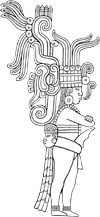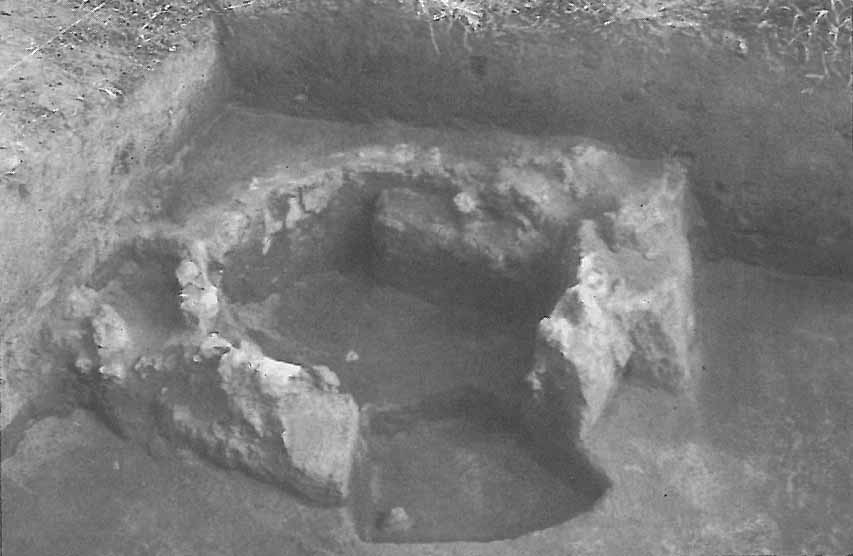

|
Death Gods, Smiling Faces and Colossal Heads: Archaeology of the Mexican Gulf Lowlands by Richard Diehl |
|
| |
The Classic Period (A.D. 300-900) The Classic period was a time of cultural florescence throughout Mesoamerica. Populations grew in size and density, social complexity increased, long-distance commerce intensified, warfare motivated by political and economic considerations became the norm, and artistic accomplishments, especially in religious and elite realms, achieved new heights. These processes culminated in the brilliant Early and Middle Classic urban civilization of Teotihuacan and the less urban but equally brilliant Late Classic cultures of Monte Alban, the lowland Maya, and El Tajin. The Gulf Coast lowlands shared in these developments, albeit while maintaining a distinctly regional flavor to its cultures and their material and artistic manifestations. The Early (A.D. 300-450) and Middle (A.D. 450-600) Classic periods The first half of the Classic Period was a time of gradual evolution rather than radical change in the Gulf Coast lowlands. Hierarchically organized societies were established everywhere and local populations appear to have grown in size. Although Early and Middle Classic occupations are reported from virtually every portion of the region, most of the published accounts are sketchy preliminary reports of field projects or detailed descriptions of pottery types that neglect other aspects of culture. The best known Early Classic site is Cerro de las Mesas, located in the low-lying Mixtequilla region northwest of the Tuxtlas. Matacapan, a large center a few hours from Lake Catemaco in the heart of the Tuxtlas, is the best single source of information on the Middle Classic. Cerro de las Mesas' initial occupation occurred during the Late Formative, but the center grew and prospered during the Early and Middle Classic periods. Fifteen stelae, many with unreadable glyphs or empty cartouches that may have contained painted glyphs, have been reported from Cerro de las Mesas. Many of these sculptures display stylistic elements traceable to the earlier Izapa-related sculptures at Tres Zapotes, La Mojarra, and other sites in the region. The relationship between the Cerro de las Mesas inscriptions and the older La Mojarra stela is not clear, but both may belong to the same writing system. Indeed, one authority has suggested that the La Mojarra stela was being shipped from the quarry to Cerro de las Mesas when it fell off the raft at the riverbank in front of La Mojarra. Two stela contain Long Count dates, interestingly enough, both fall within the Middle Classic: Stela 6 (9.1.12.14.10 or A.D. 468) and Stela (8-9.4.18.16.8 or A.D. 533), a time when Cerro de las Mesas pottery shows strong Teotihuacan influence. The highland Mexican city of Teotihuacan emerged as Mesoamerica's largest and most influential metropolis in the Middle Classic period (A.D. 450-600). Commerce was the driving force behind Teotihuacan's ventures into distant lands as far away as highland Guatemala, the Peten jungles of the Maya lowlands, and west Mexico. Teotihuacan merchants were naturally attracted to the Gulf Coast lowlands where they could obtain highly prized tropical commodities such as cacao, rubber, jaguar pelts, caiman skins, marine shells, stingray spines, and bright feathers in addition to lucrative markets for Teotihuacan merchandise. Furthermore, the region contained several natural communication routes to the southeast and the Maya area that were unobstructed by any existing major power. All these routes ultimately converge upon the Papaloapan River and Tuxtla Mountains, so it is not surprising that many archaeological sites in the Tuxtlas region exhibit evidence of sustained Teotihuacan contacts. Recent investigations at Matacapan have shed considerable light on Teotihuacan contacts with Tuxtlas and the entire the Gulf Coast. Matacapan was established during the fifth century by migrants from Teotihuacan. They chose a location adjacent to a major deposit of kaolin clay, an excellent raw material for pottery. In addition, the location was ideally situated to monitor military and commercial movement through the region. They constructed houses quite similar to the ubiquitous apartment compounds at Teotihuacan and erected at least one temple with Teotihuacan-style talud and tablero facades. In addition to copying the architectural models of their mother city, the residents of Matacapan used ritual paraphernalia virtually indistinguishable from that found at Teotihuacan. These objects included pottery vessels, figurines, and candeleros (small rectangular incense burners made of clay). Pottery manufacture was a big industry at Matacapan, and recent archaeological investigations have identified large workshop zones with scores of kilns and debris from pottery-making activities (Fig. 4.5). Much of this pottery was exported to nearby communities in southern Veracruz, but some was traded as far away as Teotihuacan itself. The Teotihuacan colony also served as a way station for highland merchants en route to the Maya area, and while the residents apparently maintained close ties with the home city, they do not appear to have been under its direct control.
Research at Teotihuacan also reveals evidence of commercial contacts with Matacapan and the Tuxtlas. While there is no evidence to support older hypotheses that Teotihuacan was established, or conquered, by migrants from the coast, there is considerable evidence of close ties with Gulf Coast groups in the later history of the highland city. Veracruz ceramics have been identified in the "Merchant's Barrio," a section of the city believed to be occupied by long-distance traders, and certain Gulf Coast stylistic motifs appear frequently in Teotihuacan art. It is interesting and perhaps significant that Teotihuacan maintained connections with its Gulf Coast partners for at least a century after the severance of its ties with other regions of Mesoamerica. In fact, these relationships persisted until Teotihuacan went into a complete eclipse as a Mesoamerican power in the eighth century. In the remainder of the area the Classic cultures are a muddle. For the most part site chronologies lack the most elementary supporting evidence, and the "archaeological record" consists of vast quantities of poorly excavated, inadequately documented, and even looted pottery vessels, clay sculptures, and figurines. The justly famous clay statues and figurines, virtually synonymous with Veracruz archaeology, are an excellent case in point. A bewildering army of styles, subtraditions and regional variants have been defined, frequently in the complete absence of any archaeological data. The tradition is most highly developed in central and south-central Veracruz and appears to have lasted from the Late Formative until the Late Classic period. Those assigned to the Early Classic include the Upper Remojadas I and Nopiloa I styles, named for archaeological sites located between the Tuxtlas and Veracruz City. In addition to the small human and animal effigy figurines, some larger ceramic statuary has been assigned to this period, foreshadowing the flowering of this tradition in Late Classic times. |
|
|
Text links to all pages at this site are available at the FAMSI INDEX |
||
